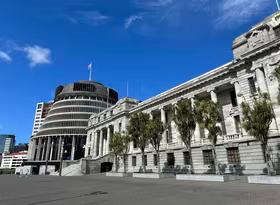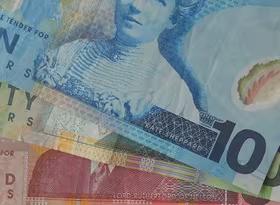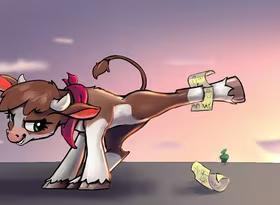Soaring dollar reflects strong economy
With the New Zealand dollar surging to new post-float highs on a regular basis, the viability of exporting is under threat for those outside the dairy sector. The pressure on exporters has seen US professor Steve Hanke recently assert that our economy is in a "death spiral". He stated that "you get a flood of capital coming in chasing the high interest rates, and the flood of capital, of course, aggravates the inflation problem" leading to even higher interest rates.
It’s a confusing step in logic to state that the flood of capital aggravates the inflation problem. The normal view is that the rising dollar actually lowers the domestic price of tradable goods and, therefore, inflationary pressures. For example, if the US/NZ exchange rate was still at 62c (as it was a year ago), petrol prices would be close to $2/litre, and the price of a two-litre bottle of milk would be another dollar higher than it already is.
There are only two conceivable transmission paths by which the influx of capital might add to the inflation problem. Path one: more foreign funds could keep longer-term interest rates down and encourage more borrowing. Path two: imports are more affordable so real demand continues to grow strongly. But any effects from the first path have actually diminished this year as fixed mortgage rates have risen markedly. And the inflationary effect of the second path is doubtful
— the volume of goods consumed will grow, but only because prices have fallen in the first place.
Economics wouldn’t be such a source of intrigue (and confusion or controversy) if it wasn’t for conflicting or unorthodox ideas. But those ideas need to be founded on a strong theoretical basis. Professor Hanke appears to have a fundamental flaw in his logic, enabling him to reach the conclusion that we should abandon the floating exchange rate and peg the New Zealand dollar to the US currency. A quick internet search of previous statements by Professor Hanke shows that he has something of a fetish for fixed exchange rates.
It is overly simplistic to blame the high New Zealand dollar on interest rates alone. The higher currency also represents a natural response to high commodity prices for our exports. The inflationary impact from the high dairy prices would be significantly larger than it already is if the dollar was not as high as it is.
A sustained period of stability in world financial markets has also encouraged foreign investors to keep investing their money in New Zealand. Our current slow rate of economic growth, the large current account deficit, and the risk of a currency correction all make New Zealand a relatively risky proposition. But asset prices globally have been steadily rising and global economic growth is ticking along nicely, so the perceived chances of investors suffering significant losses are low. Consequently, the savings from Middle East oil exporters and Asian countries keep on pouring in.
By advocating a fixed exchange rate, Professor Hanke is ignoring the range of factors besides interest rates that are driving the New Zealand dollar higher. He also implicitly promotes the view that a small group of policymakers would have greater collective wisdom insetting an appropriate exchange rate than market forces. In New Zealand, one only has to look back to the "crawling peg" exchange rate regime of the early 1980sto find an example of the authorities fighting the market and losing. Ultimately the crisis was only resolved by a 20% overnight devaluation of the dollar inmid-1984 followed by the float of the dollar in early 1985.
Exchange rate movements will always result in winners and losers. Typically the complaints seem to be loudest when the New Zealand dollar is strong. Exporters suffer, while consumers of imports are the only beneficiaries.
In contrast, there are few complaints when the dollar is weak and imports are expensive. Households are a disparate group, and unlike exporters or business groups, do not have a definite spokesperson to make sure their opinions are heard. But the widespread nature of the gains enjoyed by consumers as a result of the high dollar should not be ignored.
One final point: with dairy farmers enjoying a huge income boost that looks likely to be reasonably sustained, now shapes as the ideal time to force farmers to fully face the costs of dairy production. It is clear that the large number of dairy conversions over the last decade is causing environmental stress in terms of water usage and carbon emissions. Charging for water, for example, would prevent marginal land from being used for dairy farming and ensure that agricultural production decisions are made with the longer-term implications for the economy in mind.








